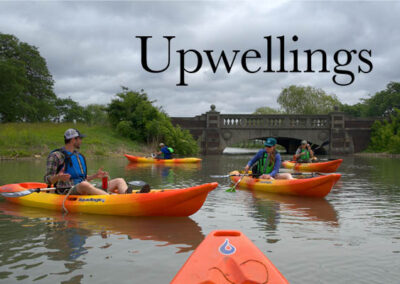National Invasive Species Awareness Week, Part 2: The Great Lakes Aquatic Nonindigenous Species Information System provides profiles, maps, and further reading for scientists and citizens alike.

Great Lakes Aquatic Nonindigenous Species Information System (GLANSIS) map shows the number of nonindigenous species by Great Lakes watershed.
National Invasive Species Awareness Week this year is Feb. 26 to March 2, 2018. The goal is to draw attention to invasive species and what individuals can do to stop the spread and introduction of them. This effort is sponsored by a diverse set of partners from across the country. To increase awareness of Michigan’s invasive species, Michigan State University Extension and Michigan Sea Grant are publishing a series of articles featuring resources and programs in our state working on invasive species issues.
This article features the Great Lakes Aquatic Nonindigenous Species Information System (GLANSIS) which provides profiles, maps, and further reading for scientists and citizens alike.
Aquatic invasive species have been a serious problem for the Great Lakes since the 1800s. By the mid-1990s, the Great Lakes were facing an invasion rate of nearly two new species every year. Across the globe, hundreds of species seemed to be on the move, and information about them was changing on a daily basis. In late 2002, Dr. Dave Reid of NOAA’s Great Lakes Environmental Research Laboratory (GLERL) realized the need for a “one-stop” comprehensive database on aquatic nonindigenous species in the Great Lakes. Funding was secured, Dr. David Raikow was brought on to develop and manage the fledgling database, and in 2005, GLANSIS—the Great Lakes Aquatic Nonindigenous Species Information System—was launched with basic information and bibliographies on 139 established nonindigenous species.
Numbers keep growing
As of 2018, 187 aquatic nonindigenous species are established in the Great Lakes, where many of them negatively impact environmental, economic, and human health. These introduced animals, plants, and microorganisms can disrupt food webs, outcompete native species, clog waterways, and even transmit parasites and disease. The ability to accurately identify these species, track their spread, and access information about how to control them is a necessity for environmental researchers and resource managers.
GLANSIS is designed to meet these needs and more. Hosted by GLERL and currently funded by the Great Lakes Restoration Initiative (GLRI), the database provides identification and management information, maps of sightings, and reference material for more than 250 nonindigenous and watchlist species in the Great Lakes basin. A partnership with the U.S. Geological Survey Nonindigenous Aquatic Species database enables GLANSIS to provide a seamless interface with their database of reports for the inland lakes. The list generator search feature allows users to look up information by scientific and common names, taxonomic groups, and specific lakes and their drainages to generate species lists and access information about each species. Another tool, the map explorer, displays all sightings of a chosen species on habitat map layers provided by the Great Lakes Aquatic Habitat Framework (GLAHF). The map explorer also allows users to quickly map sightings of selected “hot button” species like grass carp and rusty crayfish with a single click.
Who can use GLANSIS?
While GLANSIS was originally designed for use by scientists and environmental managers, this publicly-accessible tool can be used by teachers, students, anglers, property owners, and anyone who wants to learn more about invasive species in the Great Lakes. Citizens and stakeholders can help protect their local waterways by learning how to recognize, report, and stop the spread of aquatic invaders.
- Are you a science teacher building a lesson plan on invasive species? Use the GLANSIS search portal to generate a list of species in your local waterway.
- A student researching a chosen species for a class assignment? Check out the non-technical profiles produced by Indiana-Illinois Sea Grant to learn more about your species in plain language or access our glossary to help you understand technical reports.
- A lake association member? Download the list of invasives for your lake (and nearby lakes, so you know what to watch for.)
- A researcher interested in how habitat type affects patterns of invasion? Use the map explorer to find species sightings, download them to your own GIS or use GLAHF’s habitat layers for better insight on how environmental conditions might influence their spread.
- A property owner, fisherman or beachgoer who has found something unusual? Report your finding to us.
- An undergraduate or graduate student looking for a project idea? Check profiles for what we don’t know or where there are gaps in the current state of the science.
To use GLANSIS and learn more about nonindigenous aquatic species in waterways near you, explore the website at https://www.glerl.noaa.gov/glansis/.
For assistance in using the database or suggestions for additional information that GLANSIS should provide, contact [email protected] or [email protected].
Read the entire 2018 National Invasive Species Awareness Week series
- Part 1: Learn more about invasive species and what you can do to help fight this problem in Michigan.
- Part 2: What is GLANSIS?
- Part 3: Who’s who in the Great Lakes
- Part 4: Aquatic Invasive Species Paddling Program
- Part 5: Red Swamp Crayfish update


